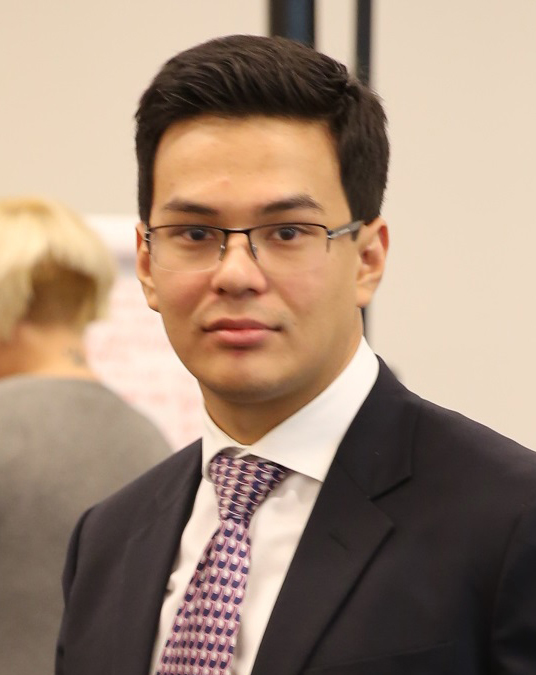The current international geopolitical stage and the global economic situation are in the midst of complex times. This period is especially difficult because of the new political and military conflicts around the world. Nonetheless, we should admit that it could be much more dangerous and threatening to global security if the growth of nuclear programmes did not stop in the last century.
 This year, the world is celebrating a very important date: the 45th anniversary of the Treaty on the Non-Proliferation of Nuclear Weapons, commonly known as the Non-Proliferation Treaty or NPT. The treaty entered into force on March 5, 1970. Today, more than 190 states have ratified the historic document. The NPT is important because its mission includes preventing the spread of nuclear weapons and weapons technology, promoting cooperation in the peaceful uses of nuclear energy and achieving nuclear disarmament and general and complete disarmament, according to official UN information.
This year, the world is celebrating a very important date: the 45th anniversary of the Treaty on the Non-Proliferation of Nuclear Weapons, commonly known as the Non-Proliferation Treaty or NPT. The treaty entered into force on March 5, 1970. Today, more than 190 states have ratified the historic document. The NPT is important because its mission includes preventing the spread of nuclear weapons and weapons technology, promoting cooperation in the peaceful uses of nuclear energy and achieving nuclear disarmament and general and complete disarmament, according to official UN information.
However, there is much more to nuclear disarmament than the NPT. The world today knows how terrible and scary the consequences of nuclear testing can be. Each nuclear test left an unhealed scar on our planet. One of the biggest such scars is in fact in Kazakhstan: the Semipalatinsk Test Site or the STS. It was the primary testing venue for the Soviet Union’s nuclear programme and is located on the country’s northeastern steppes, not far from the Irtysh River and numerous settlements.
According to official information, the Soviet Union conducted 456 explosions between 1949 and the cessation of atomic testing in 1989. The country’s 456 explosions included 340 underground blasts (borehole and tunnel) and 116 atmospheric (either airdrop or tower administered) explosions. The Soviet leadership had little concern for the testing’s impact on the local people and environment. The total damage of these explosions was more than that of 2,500 of the bombs dropped on Hiroshima. This information and other data about the full impact of radiation exposure and nuclear explosions came out only after the closing of the test site in 1991.
The closing of the test site in Semipalatinsk was an extremely important event not only for Kazakhstan, but also for all of Central Asia and the anti-nuclear movement around the globe. The first President of Kazakhstan, Nursultan Nazarbayev and the Kazakhstan anti-nuclear movement Nevada-Semipalatinsk, which was formed in 1989, did the most to get the STS closed. This movement was one of the first and biggest major anti-nuclear movements in history. One of the leaders of this movement was Olzhas Suleimenov, who was also a member of Parliament at that time.
Kazakhstan’s sad tale and the radioactive after-effects, which directly impacted the health of about 200,000 local residents at any given time, showed the world the true danger of nuclear testing. Nazarbayev’s positive role in promoting global understanding of the necessity to fight nuclear threats manifests itself in his decision to decline nuclear power status on his country’s behalf. Due to the political will of the President, the country voluntarily renounced the world’s fourth largest nuclear arsenal, which it inherited from the Soviet military machine. According to Nazarbayev, the arsenal consisted of more than 110 ballistic missiles with 1,200 nuclear warheads able to reach any point on Earth.
This decision was historically important and rightly guided. It is also very important because Kazakhstan is the second largest possessor of natural uranium reserves in the world and ranks first in its production. In a speech, the President mentioned that the closure of the Semipalatinsk test site opened a new stage of global nuclear non-proliferation and disarmament. Later, in September 2006, in cooperation with the United States and Russia, Kazakhstan, together with other nations, signed the Semipalatinsk Treaty, which declared Central Asia a nuclear-weapons-free zone.
The world today should not underestimate how real and dangerous the nuclear threat is. Another initiative of Kazakhstan’s President in promoting the anti-nuclear-weapons movement around the world was the launch of The ATOM Project (which stands for “Abolish Testing. Our Mission”) at a parliamentary assembly in Astana on the UN’s International Day against Nuclear Tests in 2012, a commemoration that takes place every Aug. 29. Through such projects, people are able to support the anti-nuclear-weapons movement. In addition, they can help build global support for a permanent end to nuclear weapons testing and even secure the total abolition of nuclear weapons through peaceful methods.
Today, people from all over the world have another chance to support the anti-nuclear movement by participating in the Global Wave 2015 on April 26-27. This event will unite young people, activists, celebrities, stars, political and religious leaders and other active representatives of prominent global society. One of the most important ideas in the anti-nuclear-weapons movement is defending and promoting the idea of a nuclear-weapons-free world. A nuclear-weapons-free world is a common goal for which all countries in the world should strive. Kazakhstan’s story shows the world that nuclear, or any type of military power is not a strong pawn in foreign policy. Today, we understand the true meaning of the words of President Nazarbayev, that only by acting together, we can make our world a safer and better place.
The author is a senior research fellow at the Analytical Complex of the Library of the President of Kazakhstan.

